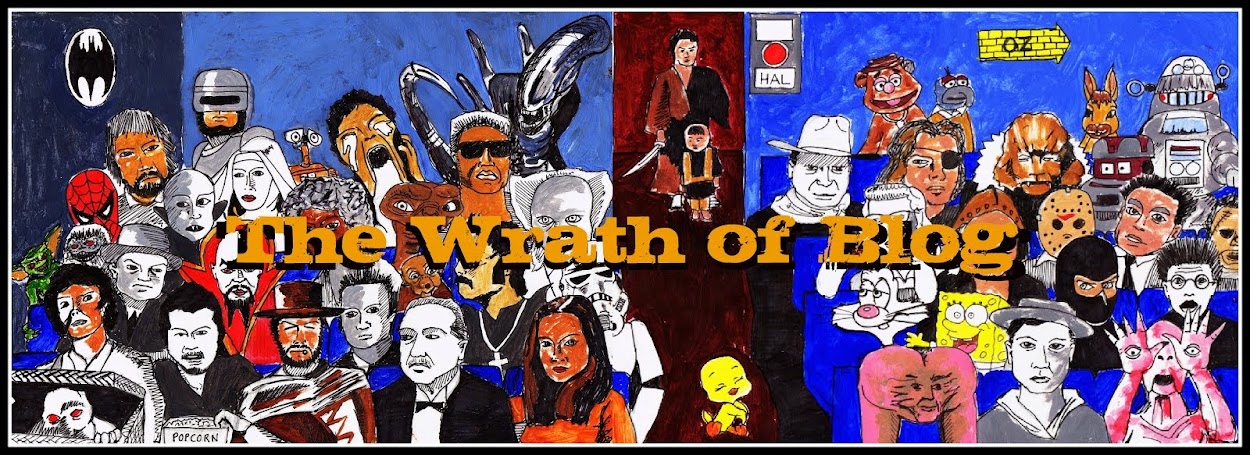 Written by Dardanno Sacchetti (but credited to his wife, Elisa Briganti), and originally titled 'Island of the Living Dead,' the film was at first conceived as an adventure yarn, with elements of horror. Sacchetti was influenced by older, pre-Romero zombie films, such as I Walked With a Zombie (1943) and White Zombie (1932), films that looked towards the Caribbean mysticism and the then largely unknown pseudo-religion of Voodoo. In these narratives, the zombie could easily be seen as victim rather than outright monster (like the somnambulist in the seminal The Cabinet of Dr. Caligari (1920)), who is ultimately under the control of sinister magic, and dominated for nefarious purposes. The screenplay's influences are further illuminated with Zombie Flesh Eaters's Dr. Menard (Richard Johnson), the mad scientist, who's original conception was taken largely from H. G. Wells's science fiction novel, 'The Island of Doctor Moreau'. However, much of these more "classic" horror devices were thrown aside in favour of an attempt to address the same audience that saw Dawn of the Dead (but more specifically for the more national cut that Dario Argento released in Italy as Zombi).
Written by Dardanno Sacchetti (but credited to his wife, Elisa Briganti), and originally titled 'Island of the Living Dead,' the film was at first conceived as an adventure yarn, with elements of horror. Sacchetti was influenced by older, pre-Romero zombie films, such as I Walked With a Zombie (1943) and White Zombie (1932), films that looked towards the Caribbean mysticism and the then largely unknown pseudo-religion of Voodoo. In these narratives, the zombie could easily be seen as victim rather than outright monster (like the somnambulist in the seminal The Cabinet of Dr. Caligari (1920)), who is ultimately under the control of sinister magic, and dominated for nefarious purposes. The screenplay's influences are further illuminated with Zombie Flesh Eaters's Dr. Menard (Richard Johnson), the mad scientist, who's original conception was taken largely from H. G. Wells's science fiction novel, 'The Island of Doctor Moreau'. However, much of these more "classic" horror devices were thrown aside in favour of an attempt to address the same audience that saw Dawn of the Dead (but more specifically for the more national cut that Dario Argento released in Italy as Zombi).Whilst the majority of Zombie Flesh Eaters is set on a Caribbean island, the first and last scenes have the backdrop of Manhattan, New York. According to Sacchetti and director Lucio Fulci, these scenes were added to the script to attach it to Dawn, acting as the codification of American zombies. These scenes could either represent what the Italian producers would have called a sequel, but it could just as easily be reviewed as a prequel. The film opens as an unmanned yacht enters the waters surrounding the big apple. Coastguards board the boat finding a pit of decaying food, and eventually a zombie. It is a fantastic opening, creating tension through simple static camera shots. Fulci and cinematographer, Sergio Salvati, take their time to get to the gore in this opening, and seem to have been visually influenced by Sergio Leone's cinema of pro-violence. Like Leone, Flesh Eaters makes the audience wait for the violence that is inevitable, the masts and the New York skyline acting as the onlookers, or the eventual witnesses to the devastation to come.
The abandoned yacht leads its owners daughter, Anne Bowles (Tisa Farrow) and pushy British journalist, Peter West (Ian McCulloch), to the mysterious and locally vilified island of Matul, where Anne's father had been, and where they discover these zombie's originate from. The dead, it seems, are rising to "tear the flesh of the living". It would be impossible to talk about Italian horror cinema without discussing the graphic nature of blood and gore. Argento and Fulci are the masters of this kind of imagery, and Flesh Eaters delivers these moments with glee. From the ripping of flesh from the neck of a coastguard, to the infamous scene where Mrs Menard's eye is pulled towards a wood splinter (eye gauging being a particular relish for Italian filmmakers, acting - like Bunuel and Dali's eye-slicing Un Chien Andalou (1929) - as a literal assault on the audience, who's eyes are essential to the viewing of cinema), the excessive blood-letting of Italian horror will delight fans of the genre, but more specifically gives Italian Horror its raison d'etre, and (at the time) distinguished it from American horror - although the influence of these directors would inevitably transfer.
Whilst the cinema of Fulci is easily lambasted, with his narratives becoming increasingly incoherent, there is no disputing his visual flare (incidentally, Argento has been accused of the same unintelligible narrative structures). Seeing Zombie Flesh Eaters in its original aspect ratio highlights his love of the image. This was a problem for Italian horror in the 1980's, as it was served badly by pan and scan video releases. Whilst this is no cinema classic, it is a whole lot of fun. Fulci's zombies look fantastic, dripping with vulnerable flesh, clearly only recently exhumed from the dusty grounds, oozing with maggots, worms, and newly ripped flesh. As with the opening scene, the closing moments frames the Brooklyn Bridge, pointing towards the world famous city, as the marauding dead slowly move towards apocalypse. A chilling final image, as the sound of a radio presenter is devoured by the intrusion of flesh eating monsters.
Directed by: Lucio Fulci
Starring: Tisa Farrow, Ian McCulloch, Richard Johnson
Country: Italy
Rating: ***
Marc Ivamy




Oh, and a zombie fights a shark, which is rather silly, but cool. A scene added, no doubt, as the shark was still in the global cinematic consciousness.
ReplyDelete